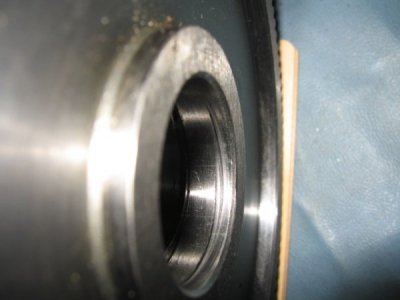- Joined
- Jan 23, 2012
- Messages
- 1,216
remove the balls and the inner race, now deal with the pressed in outer race with your arc welder, weld the area where the rollers use to ride, with a weld about 3/16" long . maybe do it in two places about 180 degrees apart, when it cools, the bearing race will shrink enough from the weld pulling it that it will fall out by itself. no magic, just physics. . . . . works every time. . . . .
also, it may possibly be just a light press fit with loctite holding it in place, if thats the case, some fairly extreme heat will loosen it. the welder certainly will. . .
also, it may possibly be just a light press fit with loctite holding it in place, if thats the case, some fairly extreme heat will loosen it. the welder certainly will. . .



